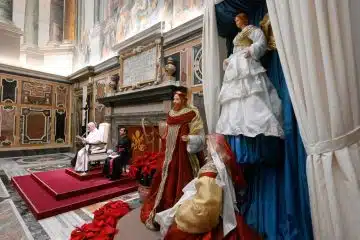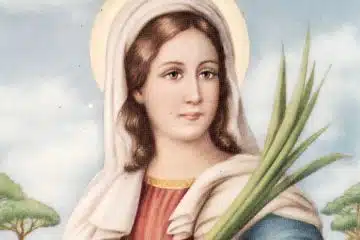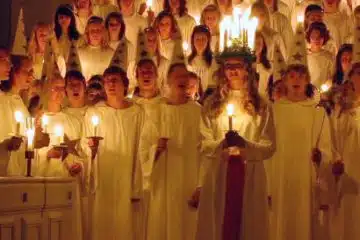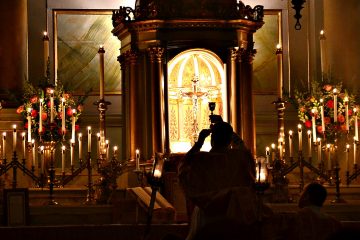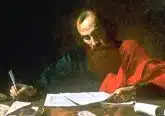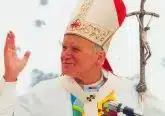From the Nature of Man to the Nature of Marriage
Note: This article is part of an ongoing series on Pope St. John Paul II’s “Theology of the Body.”
For some time now, we have been walking through Pope John Paul II’s meditations known as Theology of the Body (TOB). Before going on with our reflections, it might be helpful to come up for air and get re-oriented. When people ask me what TOB is, I tell them it is the late pope’s magnum opus, his definitive work on what it means to be a human person, the nature of human love, and the implications of these for sexuality ethics. He began this work as a book manuscript when he was a cardinal archbishop in Poland. Upon his election to the Chair of St. Peter, he perceived that the Holy Spirit was calling him to present his teaching not only to his people in Poland but to the entire universal Church. As pope, he used his manuscript as the basis of his Wednesday catecheses from 1979 to 1984. In doing so, this teaching entered into the Church’s ordinary magisterium as an enduring gift to God’s people for generations to come.
Looking at TOB as a whole, the late pope subdivided the work into two major parts, each with distinct chapters and subsections. Up to this point in our reflections on TOB, we have focused on Part One, which contains Pope John Paul II’s threefold mediation (i.e., his “triptych”) on the human person encompassing original man, historical man, and eschatological man. Having completed our reflections on Part One, we are now ready to move on to the second part of the pope’s great work, which is focused on marriage.
Why did Pope John Paul II choose to focus Part Two of TOB on marriage? Supporting married couples was very important to him from the earliest days of his priestly ministry. He was captivated by human love and desired to support young people as they navigated courtship, marriage, and family life. In addition, he witnessed the drastic changes in Western culture over the course of the 20th century, as family values and sexual morality were increasingly attacked and degraded. To give people much needed moral and pastoral guidance in the midst of these cultural changes, he wrote the book Love and Responsibility in the late 1950s. In many ways TOB builds upon and expands that prior work.
The immediate impetus that prompted the late pope to write TOB in the 1970s was the conflict and controversies surrounding the Church’s teaching on contraception and related precepts of sexual morality. He wanted us to see the Church’s teachings in a new way and recognize them as priceless gifts because they correspond to our human nature. Indeed, rather than being an empty set of rules, Catholic moral teaching is a guide to live a truly human life—one animated by the freedom to love and be loved in a personal, dignified way. In order for us to come to this realization, Pope John Paul II labored to remind us who we are. He took us on a journey from the beginning of the human race, through our fall into sin and redemption in Jesus, to the climax of our resurrection and union with God. Having laid this foundation in Part One of TOB, he delved into the mystery of married love in Part Two.
Over the next several months, we will follow the pope’s reflections on marriage in Part Two of TOB. This is fitting because the trends and concerns that prompted him to write TOB have continued to the present. The marital meaning of sex is all but lost in secular culture today. Fewer and fewer people are getting married, and when people do marry, they do so at a significantly later age compared to prior generations. Unmarried cohabitation is increasingly common. Divorce rates remain high. Married couples are having fewer children than ever before. As a result, fewer and fewer children are growing up in intact families with a married mother and father and multiple siblings. With this context in mind, let us invite the Holy Spirit to open our hearts and minds to the beauty of God’s vision for marriage and family as we explore Pope St. John Paul II’s teachings in Part Two of TOB in the coming months. ✣
 Dr. Andrew Sodergren is a Catholic psychologist and director of psychological services for Ruah Woods. He speaks on the integration of psychology and the Catholic faith. He and his wife, Ellie, have five children.
Dr. Andrew Sodergren is a Catholic psychologist and director of psychological services for Ruah Woods. He speaks on the integration of psychology and the Catholic faith. He and his wife, Ellie, have five children.
This article appeared in the October 2025 edition of The Catholic Telegraph Magazine. For your complimentary subscription, click here.



